Association of plasma neurofilament light chain with disease activity in chronic inflammatory demyelinating polyradiculoneuropathy
- PMID: 35837802
- PMCID: PMC9796374
- DOI: 10.1111/ene.15496
Association of plasma neurofilament light chain with disease activity in chronic inflammatory demyelinating polyradiculoneuropathy
Abstract
Background and purpose: This study was undertaken to explore associations between plasma neurofilament light chain (pNfL) concentration (pg/ml) and disease activity in patients with chronic inflammatory demyelinating polyradiculoneuropathy (CIDP) and examine the usefulness of pNfL concentrations in determining disease remission.
Methods: We examined pNfL concentrations in treatment-naïve CIDP patients (n = 10) before and after intravenous immunoglobulin (IVIg) induction treatment, in pNfL concentrations in patients on maintenance IVIg treatment who had stable (n = 15) versus unstable disease (n = 9), and in clinically stable IVIg-treated patients (n = 10) in whom we suspended IVIg to determine disease activity and ongoing need for maintenance IVIg. pNfL concentrations in an age-matched healthy control group were measured for comparison.
Results: Among treatment-naïve patients, pNfL concentration was higher in patients before IVIg treatment than healthy controls and subsequently reduced to be comparable to control group values after IVIg induction. Among CIDP patients on IVIg treatment, pNfL concentration was significantly higher in unstable patients than stable patients. A pNFL concentration > 16.6 pg/ml distinguished unstable treated CIDP from stable treated CIDP (sensitivity = 86.7%, specificity = 66.7%, area under receiver operating characteristic curve = 0.73). Among the treatment withdrawal group, there was a statistically significant correlation between pNfL concentration at time of IVIg withdrawal and the likelihood of relapse (r = 0.72, p < 0.05), suggesting an association of higher pNfL concentration with active disease.
Conclusions: pNfL concentrations may be a sensitive, clinically useful biomarker in assessing subclinical disease activity.
Keywords: CIDP; IVIg; disease activity; neurofilament light chain.
© 2022 The Authors. European Journal of Neurology published by John Wiley & Sons Ltd on behalf of European Academy of Neurology.
Conflict of interest statement
M.K. reports Grifols sponsorship for meeting attendance. A.C. reports Grifols sponsorship for meeting attendance and honoraria from CSL and Lupin for an advisory role. M.P.L. was a Primary Investigator in studies for CSL Behring, UCB Pharma, Novartis, Octapharma. He has also received ad hoc consulting fees from CSL Behring and UCB and an honorarium from Terumo BCT. H.Z. reports, outside the submitted work, institutional research support and support to attend scientific meetings from Bayer Healthcare, with honoraria for lectures from Bayer Healthcare and consultancy fees from UCB Biopharma paid to University College London Hospitals Charity. H.Z. has served on scientific advisory boards and/or as a consultant for Abbvie, Alector, Annexon, Artery Therapeutics, AZTherapies, CogRx, Denali, Eisai, Nervgen, Novo Nordisk, Pinteon Therapeutics, Red Abbey Labs, Passage Bio, Roche, Samumed, Siemens Healthineers, Triplet Therapeutics, and Wave, has given lectures in symposia sponsored by Cellectricon, Fujirebio, Alzecure, Biogen, and Roche, and is a cofounder of Brain Biomarker Solutions in Gothenburg, which is a part of the GU Ventures Incubator Program (outside submitted work). The remaining authors declare that the research was conducted in the absence of any commercial or financial relationships that could be construed as a potential conflict of interest.
Figures
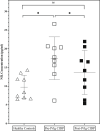
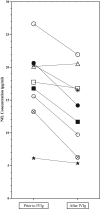

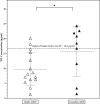
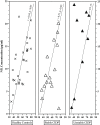
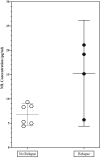
Similar articles
-
The Results of ADVANCE-CIDP IVIG Trial: Intravenous Immunoglobulin 10% Therapy With GAMMAGARD LIQUID/Kiovig for Treatment of Relapse in Chronic Inflammatory Demyelinating Polyradiculoneuropathy.Eur J Neurol. 2025 Apr;32(4):e70110. doi: 10.1111/ene.70110. Eur J Neurol. 2025. PMID: 40247653 Free PMC article. Clinical Trial.
-
Intravenous immunoglobulin treatment in chronic inflammatory demyelinating polyradiculoneuropathy, a time to start and a time to stop.J Peripher Nerv Syst. 2016 Sep;21(3):121-7. doi: 10.1111/jns.12176. J Peripher Nerv Syst. 2016. PMID: 27241239 Review.
-
Intravenous immunoglobulin and intravenous methylprednisolone as optimal induction treatment in chronic inflammatory demyelinating polyradiculoneuropathy: protocol of an international, randomised, double-blind, placebo-controlled trial (OPTIC).Trials. 2021 Feb 19;22(1):155. doi: 10.1186/s13063-021-05083-1. Trials. 2021. PMID: 33608058 Free PMC article.
-
Serum neurofilament light chain does not detect self-reported treatment-related fluctuations in chronic inflammatory demyelinating polyneuropathy.Eur J Neurol. 2024 Jan;31(1):e16023. doi: 10.1111/ene.16023. Epub 2023 Aug 17. Eur J Neurol. 2024. PMID: 37539836 Free PMC article.
-
Maintenance IV immunoglobulin treatment in chronic inflammatory demyelinating polyradiculoneuropathy.J Peripher Nerv Syst. 2017 Dec;22(4):425-432. doi: 10.1111/jns.12242. Epub 2017 Nov 21. J Peripher Nerv Syst. 2017. PMID: 29092099 Review.
Cited by
-
Increased Cerebrospinal Fluid Adenosine 5'-Triphosphate Levels in Patients with Guillain-Barré Syndrome and Chronic Inflammatory Demyelinating Polyneuropathy.Neurol Res Int. 2024 Jun 10;2024:7229216. doi: 10.1155/2024/7229216. eCollection 2024. Neurol Res Int. 2024. PMID: 38887668 Free PMC article.
-
Parameters Associated with the Required Drug Dose of Intravenous Immunoglobulin in Stable Chronic Inflammatory Demyelinating Polyradiculoneuropathy.Neurol Int. 2023 Mar 10;15(1):405-414. doi: 10.3390/neurolint15010027. Neurol Int. 2023. PMID: 36976670 Free PMC article.
-
Determinants of long-term disability in chronic inflammatory demyelinating polyradiculoneuropathy: A multicenter Korea/UK study of 144 patients.Eur J Neurol. 2025 Jan;32(1):e16575. doi: 10.1111/ene.16575. Eur J Neurol. 2025. PMID: 39654304 Free PMC article.
-
Inverse relation between serum neurofilament light chain and cognitive function in chronic inflammatory demyelinating polyneuropathy.J Neurol. 2025 Jun 3;272(6):439. doi: 10.1007/s00415-025-13179-w. J Neurol. 2025. PMID: 40459587 Free PMC article.
-
Serum Neurofilament and Free Light Chain Levels in Patients Undergoing Treatment for Chronic Inflammatory Demyelinating Polyneuropathy.Int J Mol Sci. 2024 Jan 19;25(2):1254. doi: 10.3390/ijms25021254. Int J Mol Sci. 2024. PMID: 38279256 Free PMC article.
References
-
- Van den Bergh PYK, van Doorn PA, Hadden RDM, et al. European academy of neurology/peripheral nerve society guideline on diagnosis and treatment of chronic inflammatory demyelinating polyradiculoneuropathy: report of a joint task force‐second revision. Eur J Neurol. 2021;28(11):3556‐3583. doi:10.1111/ene.14959 - DOI - PubMed
-
- England NHS. Updated commissioning guidance for the use of therapeutic immunoglobulin (Ig) in immunology, haematology, neurology and infectious diseases in England December 2018. November, 2019. https://igd.mdsas.com/clinical‐info/
-
- Van den Bergh PY, Hadden RD, Bouche P, et al. European Federation of Neurological Societies/peripheral nerve society guideline on management of chronic inflammatory demyelinating polyradiculoneuropathy: report of a joint task force of the European Federation of Neurological Societies and the peripheral nerve society–first revision. Eur J Neurol. 2010;17(3):356‐363. doi:10.1111/j.1468-1331.2009.02930.x - DOI - PubMed
Publication types
MeSH terms
Substances
Grants and funding
LinkOut - more resources
Full Text Sources
Miscellaneous

